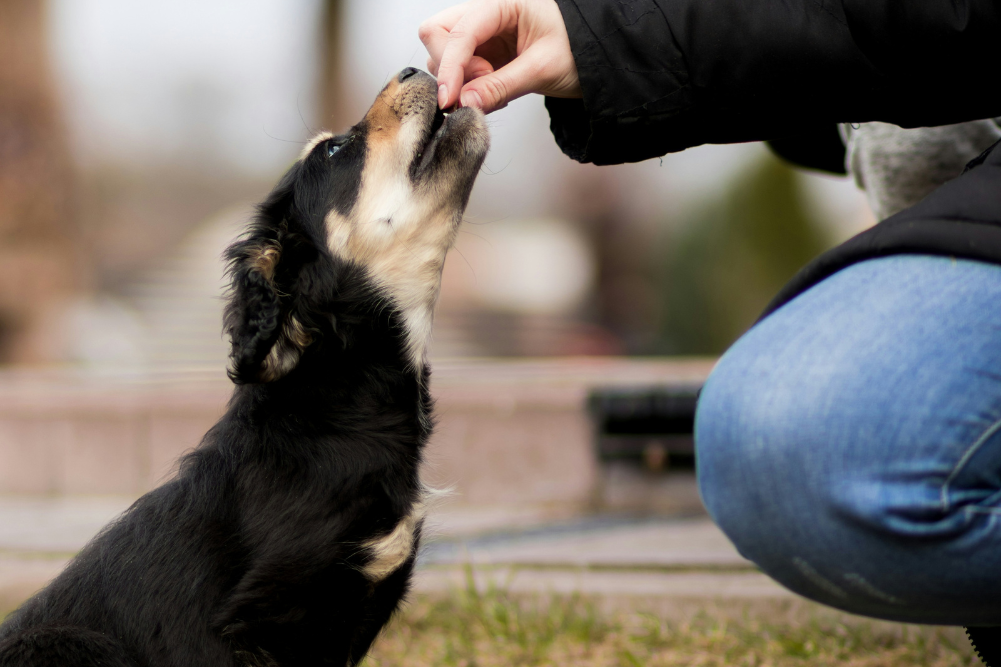Is your dog scared of thunder? Try this
Summer is upon us and our four-legged companions face warm balmy nights, but with summer comes storms and, for many dog owners, the dread of thunder phobia. Afflicted dogs may pace, shake, pant, bark, whine, run and hide. Some dogs will try to escape the noise and will break through a fence or door and run off, sustaining injury in the process. The anxiety symptoms displayed can range from mild to so severe that they interfere with the quality of life of dogs and their owners.
The tendency to develop these phobias may be inherited in some dogs. Working breeds, such as cattle dogs and kelpies, may be predisposed. Dogs with thunder phobia are also more likely to suffer from other anxieties, such as separation anxiety. A lack of exposure to storms as pups may contribute, or a traumatic event like a severe storm. Underlying medical problems like hormone imbalances and “Doggy Alzheimer’s” may complicate behaviour.
Dogs with thunder phobia are also more likely to suffer from other anxieties, such as separation anxiety.
There is no single guaranteed solution to this complex problem. Most dogs will show some improvement if a combination of strategies is tried. The following are solutions that have helped some of my patients. Where possible, I avoid using medications to treat these dogs and focus on diet, exercise, training and behaviour modification.
Diet
Although there is no specific dietary cure for behaviour, diets with high glycaemic foods or that are in general more processed may contribute to reactivity. So it is worth (under the guidance of your vet) trying a less processed approach to feeding your dog, using a meat- and vegetable-based diet. Supplements such as tryptophan may promote a sense of relaxation. Antioxidants and omega-3 essential fatty acids may support cognitive function and help reduce anxious behaviour. Calming herbs such as chamomile can be added to your dog’s food.
Exercise & training
Regular exercise is a good general reducer of anxiety. Training and play should also be introduced to provide mental stimulus. You can try to train your dog to feel calm. This is best done away from storms and in places where storms are seasonal, in the “off” season. Use a safe bed and ask your dog to sit there at a time they feel calm (maybe at night after dinner). You can reward them with a treat or a calming massage. Use your “calm but in charge” voice and body language.
The next step is to teach them to feel this way during the storm. This is where “tapes” of thunder may help, although they cannot create the lightning and changes in barometric pressure your dog also experiences. Play the tape at a low level, which is unlikely to result in anxiety, and have your dog sit on the “calming” mat and give them their reward. Gradually increase the intensity of the noise, but back off if your dog starts to show their anxious behaviour.
A safe place
Dogs in the wild take shelter in dens, so try to establish a safe haven in your dog’s environment. If possible, away from windows or doors to the outside. Make it large enough for your dog to curl up and sleep, with a small entrance. This might be a place that is always associated with something happy like a treat or a toy and that your dog always has free access to. For some dogs, it helps to have some music playing — but perhaps not the radio because the static of lightning may add to their fear.
Wraps, remedies & massages
Thunder wraps are designs to be snug fitting. They place pressure on calming points and can be used to provide comfort during times of stress. They can be purchased readymade or you can find instructions for wrapping your dog yourself. The down side is you need to be home before the storm to use them. It’s best to teach your dog to wear calming wraps away from storms, to reinforce their calming effect.
Dog Appeasing Pheromones (DAP) are synthetic hormones that mimic appeasing pheromones produced by the bitch when feeding her pups, and may encourage calm in dogs. They come as diffusers, which plug into the wall, sprays (which can work well sprayed on bandannas) and collars. You can place the storm bandanna on daily during the storm season and during desensitisation training. Rescue Remedy in water, or sprayed in the haven, is also a good idea.
Playing with familiar toys, engaging in games or practising obedience may help to distract your dog during storms. Give your dog a job to do. This worked well for a patient of mine who would bark and cower incessantly throughout the storm. His owner sat down in a comfy chair and commanded his dog to sit and drop beside him, and stay. These were commands he knew well from training. As soon as the dog knew what he was supposed to do, he calmed down. Try this with your dog. Reward him with a treat, but don’t try to pet or soothe him, because your tone will inadvertently reinforce his anxiety. For other dogs, using a lead and head collar or harness during the storm may work.
Calming massages may work, but you have to be present and awake! If no strategy is helping, discuss the behaviour with your vet. I regularly refer my patients to an animal behaviourist when behaviour is causing anxiety at Home. Owners with a better understanding of their dogs’ problems are more confident in their response. If necessary, a short course of medications can be prescribed to reduce anxiety while training takes place.








